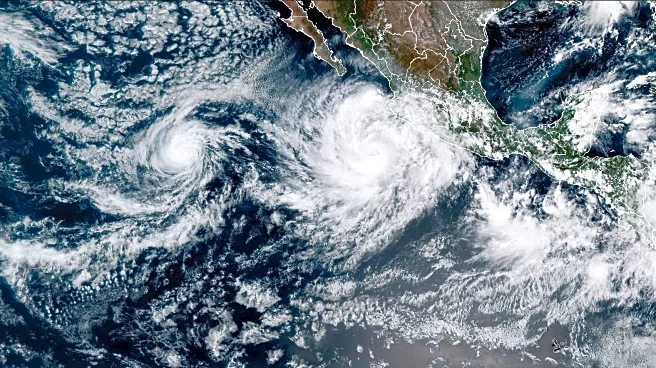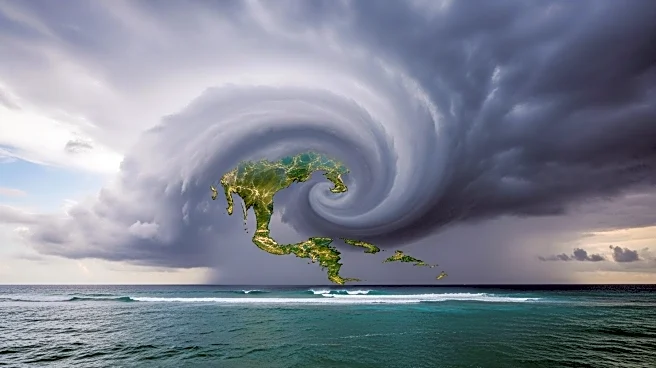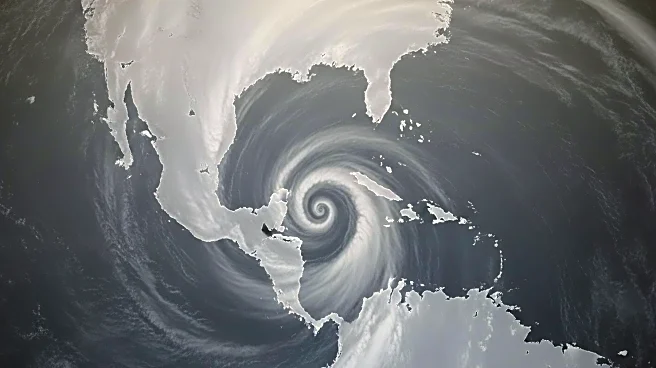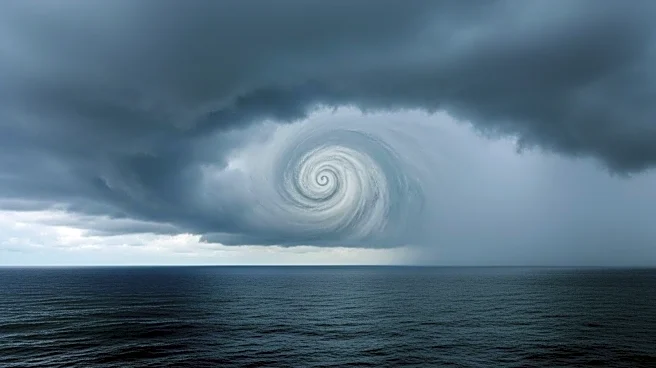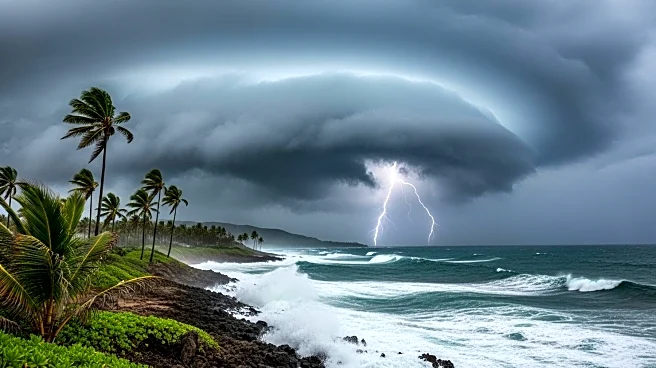What's Happening?
Tropical Storm Jerry has formed over the central Atlantic Ocean, marking the 10th named storm of the 2025 hurricane season. According to the National Hurricane Center, Jerry is currently located over 1,300 miles east-southeast of the northern Leeward Islands. The storm is moving westward at 23 mph with maximum sustained winds of 50 mph. Forecasters expect Jerry to strengthen and potentially develop into a hurricane. A tropical storm watch is in effect for several Caribbean islands, including Barbuda, Anguilla, St. Barthelemy, Saint Martin, and Sint Maarten. The storm is anticipated to approach the northern Leeward Islands by Thursday or Friday, bringing life-threatening surf and rip currents.
Why It's Important?
The formation of Tropical Storm Jerry highlights the ongoing activity in the Atlantic hurricane season, which runs from June 1 to November 30. While Jerry is the 10th named storm, only one previous storm, Chantal, made landfall in the U.S. The potential strengthening of Jerry into a hurricane could pose risks to the Caribbean islands, including flash flooding and dangerous surf conditions. The National Oceanic and Atmospheric Administration had initially predicted up to 19 named storms this season, but revised its forecast to 13-18 named storms, including 5-9 hurricanes. The development of Jerry underscores the need for preparedness in regions vulnerable to tropical storms and hurricanes.
What's Next?
As Tropical Storm Jerry continues to move westward, it is expected to strengthen and possibly become a hurricane. The National Hurricane Center will continue to monitor the storm's progress and issue updates. Residents in the northern Leeward Islands should remain vigilant and prepare for potential impacts, including heavy rainfall and strong winds. The storm's trajectory and intensity will be closely watched to assess any further risks to the Caribbean and potentially the southeastern United States.



